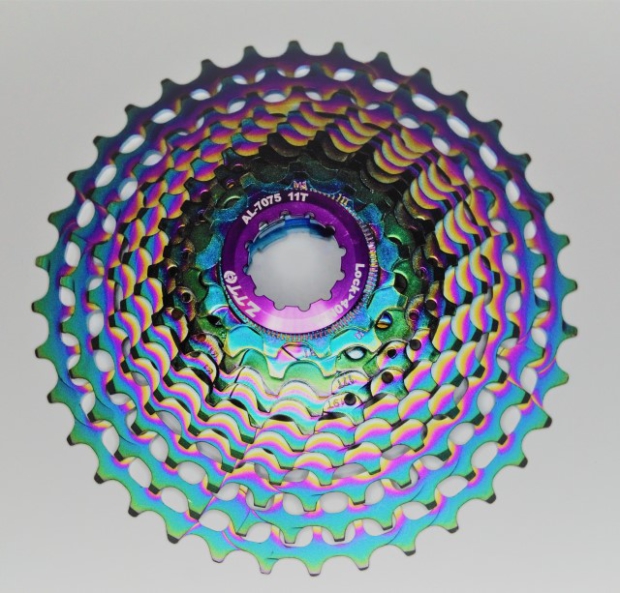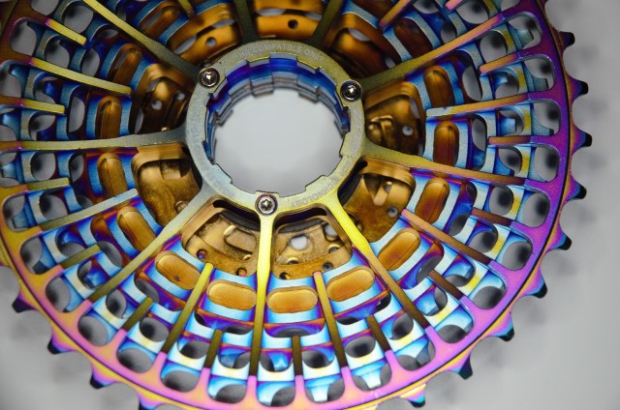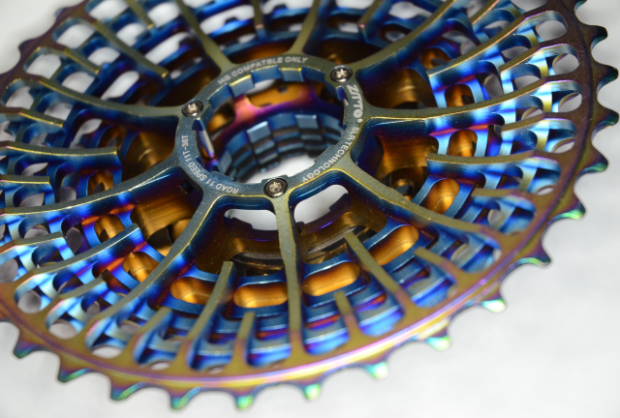The ZTTO SLR2 Cassette: It Goes to 11 (But Also 36)
One of the more common refrains in the gravel riding conversations I have had recently is the topic of gear ratios. Double chainring on the front vs 1X, 11 speed vs 12 speed, does tire size change your effective gearing (yes!) and, at or near the top of the list, “how low a gear do I need to run to do (enter name of ride here)?”
My answer to that last question has typically been, “If you’re doing any of the rides I’m doing (and you’re not getting paid to ride your bike, you’re going to want a 1/1 small chainring/biggest cog." With a “standard” Shimano compact double crankset, that means running an 11/34 on the rear to match the 50 (or 48/46) x 34 on the front.
Conveniently, that’s the biggest cog Shimano offers on their cogsets that are designed to run with a double chainring road/gravel setup. If you want anything with a bit more climbing “oomph” you’re jumping up to at least a 40t cog and running a single ring setup, or you’re running a GRX crank with smaller chainrings and gaming your gear ratio that way. Or, well, you’re doing something tricky with a derailleur hanger extension and/or component combinations that aren’t exactly manufacturer recommended.
But what if we – in the words of Nigel Tufnel – “need that extra push over the cliff” with a standard double chainring setup? Enter the ZTTO SLR2 cassette. Yes, this one goes to 11. But it also goes to 36.

As I wrote earlier, if you’re doing the gravel rides I’m doing these days, you really do want – probably need – that 1/1 ratio, but being able to go one gear better than that is… well, it’s better. A tiny bit more spin on the long grinds and a wee bit more torque on the steep technical stuff is just enough to make my rides a bit more fun when I’m having fun, and a touch faster when I’m trying to go fast.
Tooth counts for this cassette are: 11/13/15/17/19/21/23/25/28/32/36.
Comparatively, the Shimano 11/34: 11/13/15/17/19/21/23/25/27/30/34
You’ll notice they didn’t just pop a 36 on top of a 34 cassette cluster, but they also didn’t mess with the spacing on the smaller cogs. They bumped the tooth count up on the three biggest cogs. I ride a double chainring setup on my gravel bike almost entirely due to the amount of pavement I still find myself on, and too much mucking about with the tooth counts on those smaller cogs would mess with the tight ratio changes on the for going fast on the road. But up in the higher range of the cassette, I’m a lot less concerned about this. Frankly, I think they nailed the ratios on this. When I first bought this cassette I was just looking for a little bit of help on long, grinding uphills. While out riding this past weekend, I found myself on some singletrack terrain that I just flat-out would have been walking had I been on that 11/34. It wasn’t just the 36 that kept me on the bike, it was the 32 as well. Bouncing between those two gears as I monster trucked over stairstep roots and rocks put me in “MTB with drop bars” mode in a way that just hadn’t happened for me before with a road style 50/34 on the front. It turns out there is a little bit of magic that happens when you get around/under that 1/1 ratio riding really technical stuff off road.
Somehow, I had forgotten about that.
Before I get even more hyperbolic, suffice to say that 32/36 on the low end of the cassette is pretty great. I’m sold. Unfortunately, Shimano doesn’t currently make anything bigger than a 34 in a road/gravel style cassette, which means we’re stuck looking for something like this from a 3rd party manufacturer. Aren’t aftermarket/off-brand cassettes all just junk?
Historically my answer to that question has been a pretty unqualified “yes”. Manufacturing something like a cassette just isn’t easy, and up until fairly recently, there were a bunch of patent pitfalls in the way of the third-party efforts. Based on the few weeks I have put in on this cassette, though, times seem to have changed. It really is beautifully made:

…even if you ignore the rainbow anodization (and yes, you can get it in a plain silver color).
The six largest cogs are machined out of a big block of aluminum, and the machining includes a full complement of ramps and tooth shaping to coax your chain from one cog to another. The five smaller cogs are steel, three of them attached to the aluminum structure the six aluminum cogs are machined out of.

The two smallest cogs are individual units that slide on to the cassette body in traditional fashion.
How does this thing shift? Pretty darn well. Shimano doesn’t recommend putting anything larger than a 34 on with the setup I’m running, so there’s a wee bit of caveat emptor here. Having said that, there isn’t a dramatic difference in shift quality between this and the 11/34 Ultegra cassette that was on my bike previously. That’s a compliment. It’s maybe a little bit slower to respond on the bigger cogs than the Shimano unit, but I haven’t had a single missed shift. You can tell that you’re shifting across bigger jumps on the larger cogs but, well… you are.
My main gravel ride is set up with Shimano Ultegra Di2, and I have found that I really like synchro shift for gravel riding. All the shift-logic simplicity of a 1x drivetrain with all the advantages of a 2x, and the right and left shift levers can be set up to do the same thing. Pretty cool. My shift point on the downshift jumps the chain from the 32 to the 25, at more or less the same time it shifts the front from the 50 to the 34.
That’s a pretty demanding gear change, and you can definitely hear – and feel – the “clunk!” as it happens. It does happen, though, and it has reliably happened for me regardless of how much power I’ve been putting through the pedals at the time.
With all that aluminum, you would expect this cassette to be light, and you’d be correct. Mine weighed in at 229g, with the (included) aluminum lockring. That’s 100 grams less than the 11/34 Shimano Ultegra cassette without a lockring.
Aluminum cogsets have a well deserved reputation for wearing out pretty darn quickly, but with a 1000 or so miles in on this one, It’s looking just about the same as when I put it on. I’ve been running a hot-waxed chain, and we’ve been blessed with more or less completely dry conditions this summer, and those definitely combine to minimize wear, but still. So far, so good.
It’s worth noting that this is a native 11-speed cassette. It won’t mount on a 10-speed spaced hub, unlike some of the Shimano 34t freehubs.
Price? At this moment, you can buy one of these in a plain grey color for $53 on the ZTTO page at Aliexpress. The fancy rainbow ano version will set you back $81.12. That compares pretty well to the Shimano Ultegra, which sells for right around $90. You can also find these on Ebay, and via other purveyors on the Interwebs. You may even be able to find the same thing for less dough with a different name on it, but caveat emptor definitely applies here.
When I bought this cassette it was for the single, specific purpose of eking out a slightly lower gear for an event I was signed up for this summer. It probably goes without saying that the event eventually wound up being removed from my calendar. The cassette, though, wound up staying on my bike.

